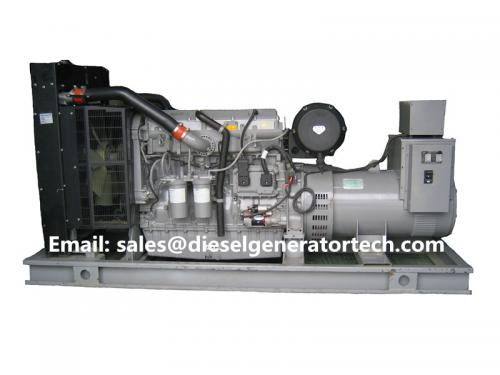Basic Components of Electric Starting System

This article mainly talks about the basic components of electric starting system. If you are interested, take a few time to read the post.
The engine driven charging alternator converts the mechanical energy from the engine to electrical energy and charges the engine batteries while the engine is running to maintain the batteries fully charged. When the engine is called to start the batteries will supply the starting ampere-hour to the cranking motor via the cranking solenoid. The cranking motor converts the electrical energy from the batteries to mechanical energy to crank the engine up to a certain speed where it can fire up by itself. This speed is usually one third the rated speed of the engine.
Basic components of Electric Starting System
1. Battery
2. Chargers
3. Cranking Motor
4. Cranking Solenoid
5. Starting Relay
6. Control System
Electric Starting System for gas turbine aircraft are of two general types: Direct cranking electrical systems and starter generator systems. Direct cranking electric starting systems are used mostly on small turbine engines. Many gas turbine aircraft are equipped with starter generator systems. Starter generator starting systems are also similar to cranking electrical systems except that after functioning as a starter, they contain a second series of winding that allow it to switch to a generator after the engine has reached a self-sustaining speed.
The starting motor for diesel and gasoline engines operate on the same principle as a direct current electric motor. The motor is designed to carry heavy loads, because it draws a current, it tends to overheated quickly. To avoid overheating, never allow the motor to run more than the specification amount of time, usually 30 seconds at a time to cool for 2 or 3 minutes before using it again.
Attention: To start a diesel engine, you must turn it over rapidly to obtain sufficient heat to ignite the fuel. The starting motor is located near the flywheel, and drive gear on the starter is arranged so that it can mesh with the teeth on the flywheel when the starting switch is closed.
About Batteries
The Batteries is the storage device for the energy supplied by the battery chargers. It stores this energy by converting the electrical energy to chemical energy and then to electrical energy. It supplies power to the cranking motor to start the engine. It supplies the extra power necessary when the engine’s electrical load exceeds the supply from the charging system. In addition, it also acts as a voltage stabilizer in the electrical system, where it evens out voltage spikes and prevents them from damaging other components in the electrical system.
Lead Acid Batteries are usually used to start the genset engines. Other batteries such as Nickel Cadmium batteries are also widely used.
Basic components of Lead Acid Batteries
1. A resilient plastic container
2. Positive and negative internal plates made of lead
3. Plate separators made of porous synthetic material.
4. Electrolyte, a dilute solution of sulfuric acid and water better known as battery acid.
5. Lead terminals, the connection point between the battery and whatever it powers.
Remember that lead acid batteries are usually called filler cap batteries. They require frequent servicing , specially adding water and cleaning the terminal posts from the salt formations.
Maybe You Also Like: Diesel Generator Battery Maintenance
Post Your Ad Here
Comments